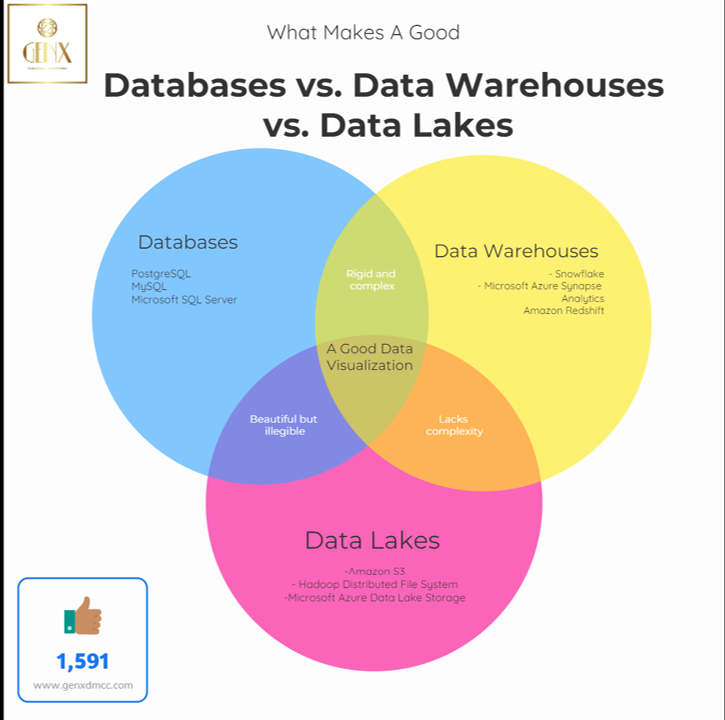
The differences between these technologies and highlight the top tools (IMHO) available for each.

In today’s digital world, data is becoming increasingly valuable for organizations. To manage and utilize this data, there are several technologies available, including databases, data lakes, and data warehouses. Databases, data warehouses, and data lakes are all data management systems, but they differ in their structure, purpose, and usage.
Databases
A database is a structured collection of data that is organized and stored in a specific format that is optimized for transactional processing. It is designed to store, retrieve, and manage data efficiently, and is typically used for operational tasks such as recording transactions, managing inventory, or processing customer orders.
Top Tools for Databases:
- PostgreSQL: This is one of the most popular free and open-source database management system.
- MySQL: This is a free and open-source database management system.
- Microsoft SQL Server: This is an enterprise relational database management system developed by Microsoft, providing a wide range of features and capabilities.
Data Warehouses
A central repository of data that is optimized for analysis and reporting. It is designed to consolidate data from multiple sources into a unified structure that can be used for business intelligence and analytics purposes. Data warehouses typically use a schema-on-write approach, meaning that data is structured and organized before it is stored in the warehouse, and is optimized for reporting and analysis.
Top Tools for Data Warehouses:
- Snowflake: This is a cloud-based data warehouse that is designed to be scalable and cost-effective.
- Microsoft Azure Synapse Analytics: This is a cloud-based analytics service that combines data warehousing and big data analytics.
- Amazon Redshift: This is a cloud-based data warehousing service that provides high-performance analytics and scalability.
Data Lakes
Is a large, unstructured repository of data that is designed to store and manage raw data in its native format, without any predefined structure or organization. Data lakes are used for exploratory and ad-hoc analysis, and are often used as a starting point for data scientists and analysts to extract insights and build models. Data lakes use a schema-on-read approach, meaning that data is not structured or organized until it is needed for analysis or reporting.
Top Tools for Data Lakes:
- Amazon S3: This is a cloud-based object storage service that provides unlimited storage capacity and high durability.
- Hadoop Distributed File System (HDFS): This is a distributed file system that is designed to store and process large volumes of data across multiple nodes.
- Microsoft Azure Data Lake Storage: This is a cloud-based storage service that provides unlimited storage capacity and high durability.
Databases, data lakes, and data warehouses are all important technologies that organizations can use to manage and utilize their data. While each technology has its own strengths and weaknesses, the top tools for each can help organizations to achieve their specific data management and analysis goals. It is important for organizations to carefully consider their specific needs before choosing the appropriate technology and toolset. Each of these data management systems serves a unique purpose and can be used together to support a wide range of data-driven applications and use cases.